
!!BEST
SELECTION OF LEARNING MATERIAL, BOOKS AND DVDs on CEE!!
The
Austrian Paradox
After
Austria had bordered during the Cold War both the countries
of the Warsaw Pact and the European Community, it joined the
EU in 1995.
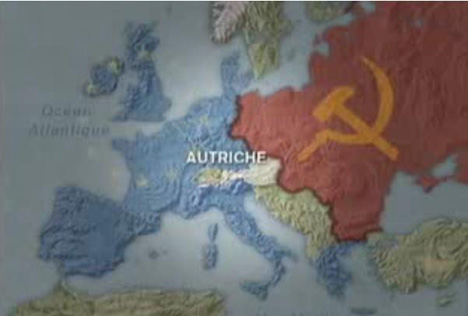
Because
of the EU’s enlargement, it is now in the center of
several regions with which it shares a common historical heritage.
The name
of Austria dates back to the “Ostarrichi” County
in the east of the Holy Roman Empire of the German nation.
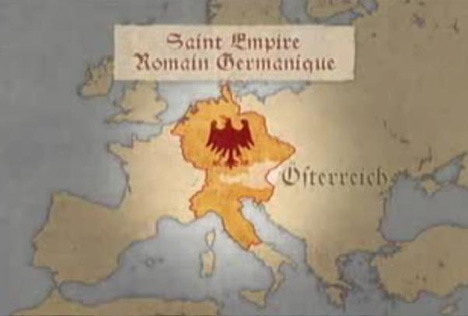
It
was part of that empire from the 10th century until its dissolution
in 1806. When by the end of the 19th Century it was kept out
from the German unification by Russia it focused its attention
to the East.
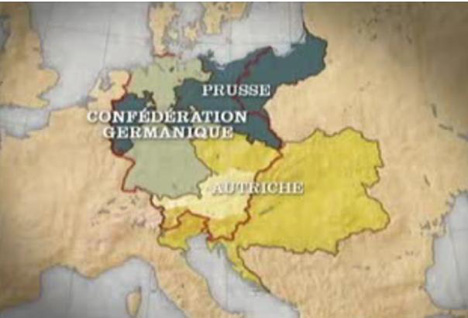
The
dual monarchy of Austria-Hungary was established in 1867 under
the Habsburgs, in which Hungary enjoyed broad autonomy, and
which existed as a multiethnic state (as a so-called middle
power) until 1918.
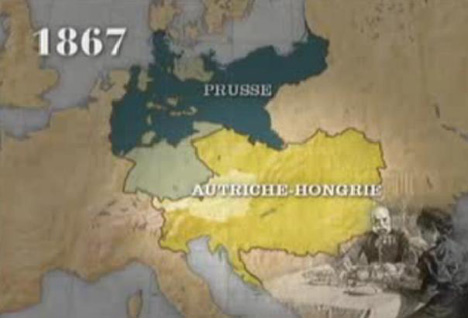
After
World War II, the monarchy was divided by the victorious Allied
powers.
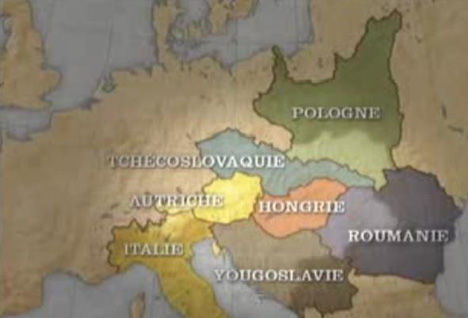
The
Treaty of Saint Germain saw the creation of a Republic of
Austria (opposed by the majority of the deputies in parliament
in Vienna). They saw it as a non-viable landlocked Alpine
country, with a capital city without a hinterland, and only
6 million people living on 83 800 square kilometers. The imperial
and royal monarchy had been 680 000 square kilometers big
and had in 1918 52 million inhabitants and has had throughout
the country industry and raw materials. The deputies had therefore
preferred an annexation to Germany. This finally came 20 years
later, when Austria was annexed in 1938 by Nazi Germany.
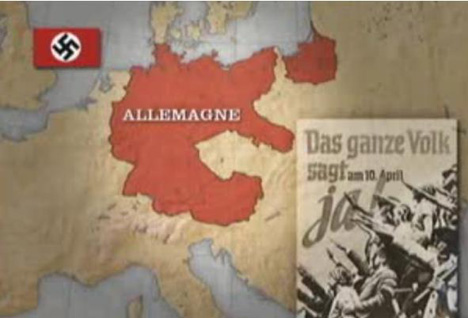
This
brief historical overview should make clear why in Austria
developed a national identity slowly. The land belongs to
the German language - and cultural area. But from a geographical
and historical sense also to south-eastern Central Europe.
In 1945
the country was divided into four occupation zones.
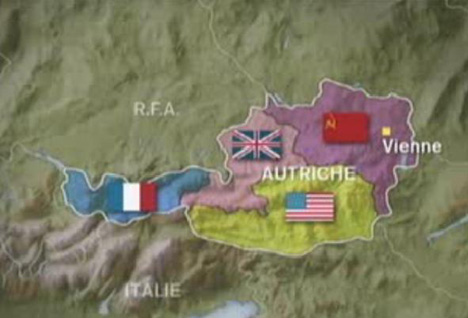
In
exchange for the withdrawal of Allied troops in Austria in
1955 then undertook strict neutrality. It did neither join
NATO nor the Warsaw Pact nor the European Communities.
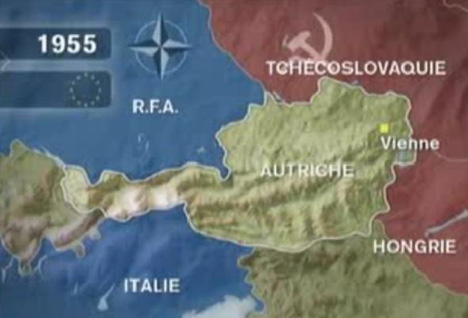
Only
the end of the Cold War allowed Austria to join the EU in
1995.
The country has 8 million inhabitants. These include Slovenes,
Croats, Hungarians in the east and south. We should also mention
a German-speaking minority in South Tyrol in northern Italy.
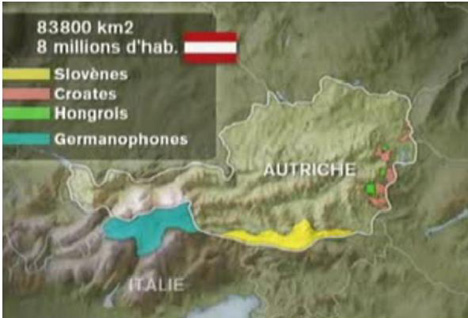
Austria
is a federation of nine states. One of these is the capital
Vienna. Vienna is only 40 km away from the Hungarian and Slovakian
border but 670 km from Bregenz, which can be accessed directly
via German territory. There are historical, and geological
reasons for this, as the Alps cover nearly 70 percent of the
country.
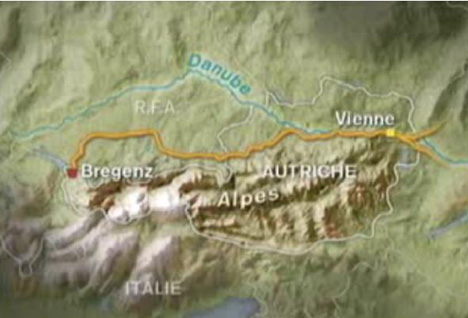
North
of it spreads a plain from the foothills of the Alps to the
Danube, a major east-west connection in Europe.
Now for
the Austrian economy - first to the industry:
In Linz
there are chemical and steel industries. In Vienna petroleum
industry, electronics and research-intensive high technology.
Furthermore, mechanical engineering in the Vienna Basin.
Steyr has a supplier for the auto industry, BMW. (due to the
proximity to Germany). More automotive companies,are in Graz,
the capital of Styria. Austria is one of the largest electricity
producers in Europe, as the Danube and the great height differences
favor the use of hydropower.
.
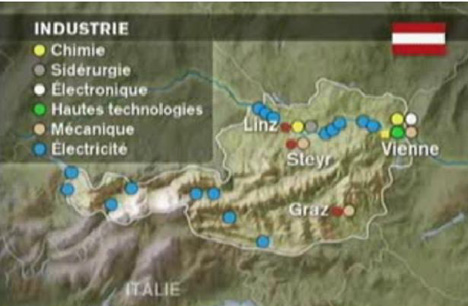
Then
farming: crops are corn, wheat, sugar beet and fruit and wine
in the Danube plain. On the slopes of the Alps livestock and
dairy industry operates. There is also through the many forests
a thriving wood and paper industry.
Finally,
the service sector. It is the driving force of the Austrian
economy. These include the skiing areas, the landscapes of
Tyrol, Salzburg province, as well as the historic cities of
Vienna and Salzburg. There are also banks, transportation
and retail companies, especially in the Vienna Basin. In addition,
the OPEC headquarters in Vienna, the OSCE and several UN specialized
agencies.
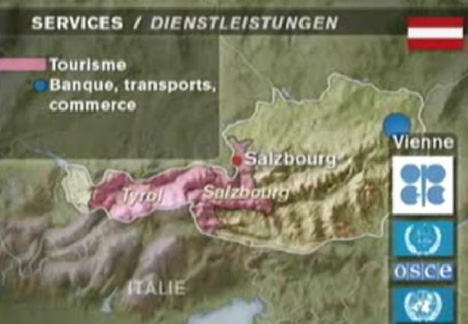
Mit
Ausnahme der Schweiz und Liechtensteins gehören alle
Nachbarländer Österreichs der Europäischen
Union an. Österreichische Unternehmen tätigen die
meisten Investitionen in Slowenien und Kroatien. Das erklärt
auch warum die österreichische Regierung den EU Beitritt
Kroatiens befürwortet. Abgesehen von der Wirtschaft spielt
aber auch die Geographie und die Geschichte eine grosse Rolle.
Die Balkanregion ist nicht weit. Österreich wirkte aktiv
am Stabilitätspakt für Südosteuropa mit und
es hat Friedenstruppen in den Kosovo und nach Bosnien geschickt.
|